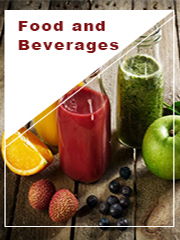The global Non-Alcoholic Wine and Beer market was valued at US$ 5986.7 million in 2022 and is projected to reach US$ 8357.2 million by 2029, at a CAGR of 4.9% during the forecast period. The influence of COVID-19 and the Russia-Ukraine War were considered while estimating market sizes.
Low-alcohol beer (also called light beer, non-alcoholic beer, small beer, small ale, or near-beer) is beer with little or no alcohol content, which aims to reproduce the taste of beer without the inebriating effects of standard alcoholic brews. Most low-alcohol beers are lagers, but there are some low-alcohol ales.
This report aims to provide a comprehensive presentation of the global market for Non-Alcoholic Wine and Beer, with both quantitative and qualitative analysis, to help readers develop business/growth strategies, assess the market competitive situation, analyze their position in the current marketplace, and make informed business decisions regarding Non-Alcoholic Wine and Beer. This report contains market size and forecasts of Non-Alcoholic Wine and Beer in global, including the following market information:
Global Non-Alcoholic Wine and Beer Market Revenue, 2018-2023, 2024-2029, ($ millions)
Global Non-Alcoholic Wine and Beer Market Sales, 2018-2023, 2024-2029, (Kiloliter)
Global top five Non-Alcoholic Wine and Beer companies in 2022 (%)
Global core non-alcoholic beer manufacturers include Anheuser-Busch InBev, Heineken etc.The top 2 companies hold a share about 60%.Europe is the largest market, with a share about 38%, followed by Middle East and Africa and Asia Pacific with the share about 26% and 20%.In terms of product, limit fermentation is the largest segment, with a share over 80%. And in terms of end user, the largest application is male, followed by female.
We surveyed the Non-Alcoholic Wine and Beer manufacturers, suppliers, distributors and industry experts on this industry, involving the sales, revenue, demand, price change, product type, recent development and plan, industry trends, drivers, challenges, obstacles, and potential risks.
Total Market by Segment:
Global Non-Alcoholic Wine and Beer Market, by Type, 2018-2023, 2024-2029 ($ Millions) & (Kiloliter)
Global Non-Alcoholic Wine and Beer Market Segment Percentages, by Type, 2022 (%)
Global Non-Alcoholic Wine and Beer Market, by Application, 2018-2023, 2024-2029 ($ Millions) & (Kiloliter)
Global Non-Alcoholic Wine and Beer Market Segment Percentages, by Application, 2022 (%)
- Liquor Stores
- Convenience Stores
- Supermarkets
- Online Stores
- Restaurants
Global Non-Alcoholic Wine and Beer Market, By Region and Country, 2018-2023, 2024-2029 ($ Millions) & (Kiloliter)
Global Non-Alcoholic Wine and Beer Market Segment Percentages, By Region and Country, 2022 (%)
- North America
- US
- Canada
- Mexico
- Europe
- Germany
- France
- U.K.
- Italy
- Russia
- Nordic Countries
- Benelux
- Rest of Europe
- Asia
- China
- Japan
- South Korea
- Southeast Asia
- India
- Rest of Asia
- South America
- Brazil
- Argentina
- Rest of South America
- Middle East & Africa
- Turkey
- Israel
- Saudi Arabia
- UAE
- Rest of Middle East & Africa
Competitor Analysis
The report also provides analysis of leading market participants including:
- Key companies Non-Alcoholic Wine and Beer revenues in global market, 2018-2023 (Estimated), ($ millions)
- Key companies Non-Alcoholic Wine and Beer revenues share in global market, 2022 (%)
- Key companies Non-Alcoholic Wine and Beer sales in global market, 2018-2023 (Estimated), (Kiloliter)
- Key companies Non-Alcoholic Wine and Beer sales share in global market, 2022 (%)
Further, the report presents profiles of competitors in the market, key players include:
- Carlsberg
- Heineken N.V
- Bernard Brewery
- Anheuser-Busch InBev
- Moscow Brewing Company
- Suntory
- Erdinger Weibbrau
- Big Drop Brewing
Outline of Major Chapters:
- Chapter 1: Introduces the definition of Non-Alcoholic Wine and Beer, market overview.
- Chapter 2: Global Non-Alcoholic Wine and Beer market size in revenue and volume.
- Chapter 3: Detailed analysis of Non-Alcoholic Wine and Beer manufacturers competitive landscape, price, sales and revenue market share, latest development plan, merger, and acquisition information, etc.
- Chapter 4: Provides the analysis of various market segments by type, covering the market size and development potential of each market segment, to help readers find the blue ocean market in different market segments.
- Chapter 5: Provides the analysis of various market segments by application, covering the market size and development potential of each market segment, to help readers find the blue ocean market in different downstream markets.
- Chapter 6: Sales of Non-Alcoholic Wine and Beer in regional level and country level. It provides a quantitative analysis of the market size and development potential of each region and its main countries and introduces the market development, future development prospects, market space of each country in the world.
- Chapter 7: Provides profiles of key players, introducing the basic situation of the main companies in the market in detail, including product sales, revenue, price, gross margin, product introduction, recent development, etc.
- Chapter 8: Global Non-Alcoholic Wine and Beer capacity by region & country.
- Chapter 9: Introduces the market dynamics, latest developments of the market, the driving factors and restrictive factors of the market, the challenges and risks faced by manufacturers in the industry, and the analysis of relevant policies in the industry.
- Chapter 10: Analysis of industrial chain, including the upstream and downstream of the industry.
- Chapter 11: The main points and conclusions of the report.
